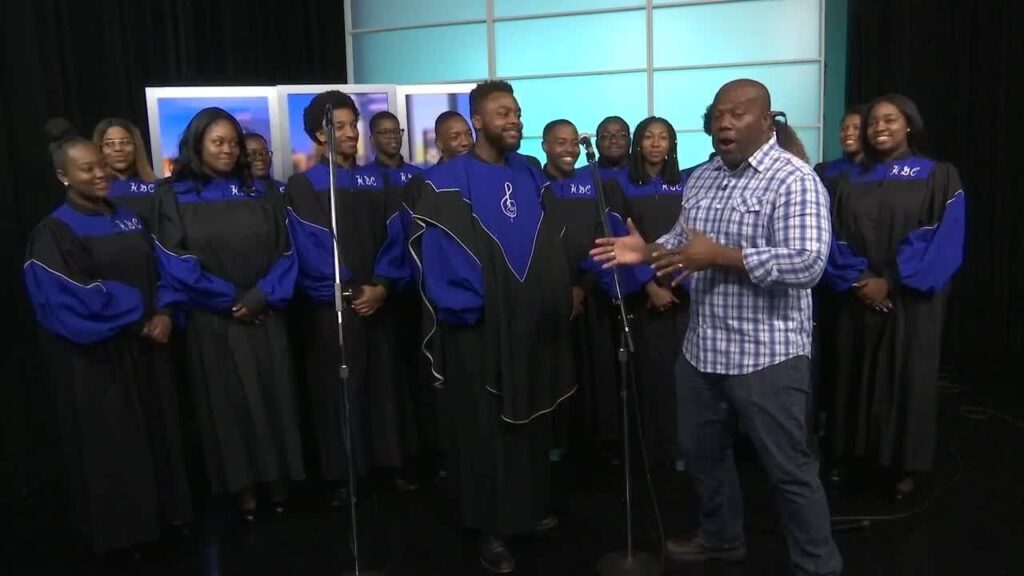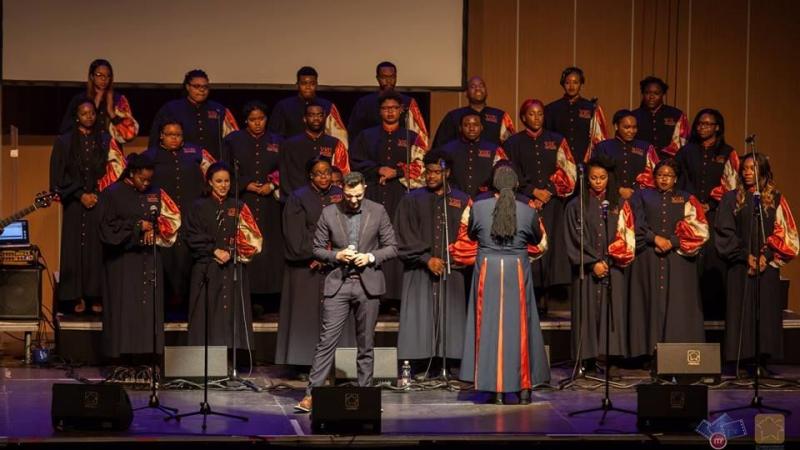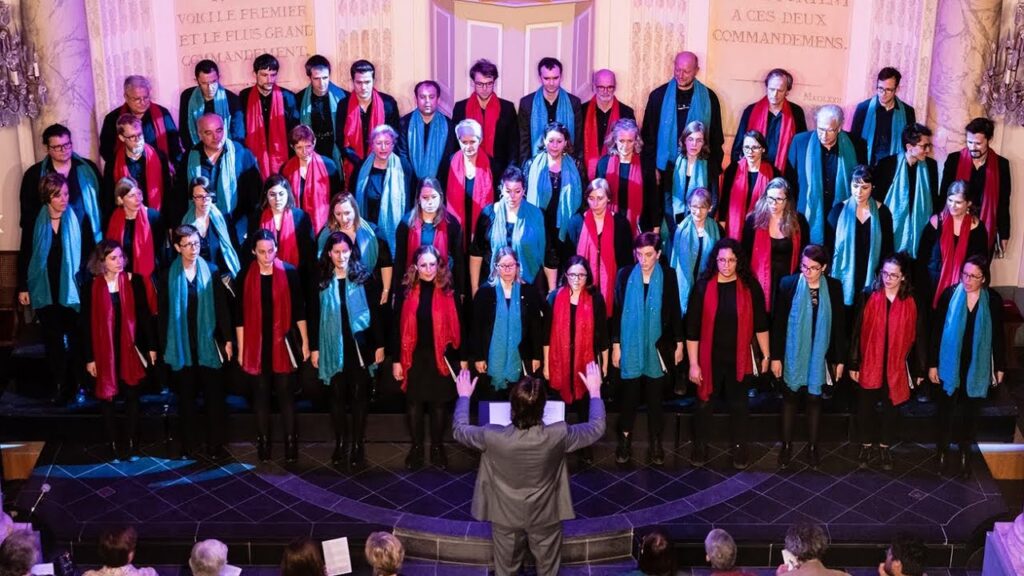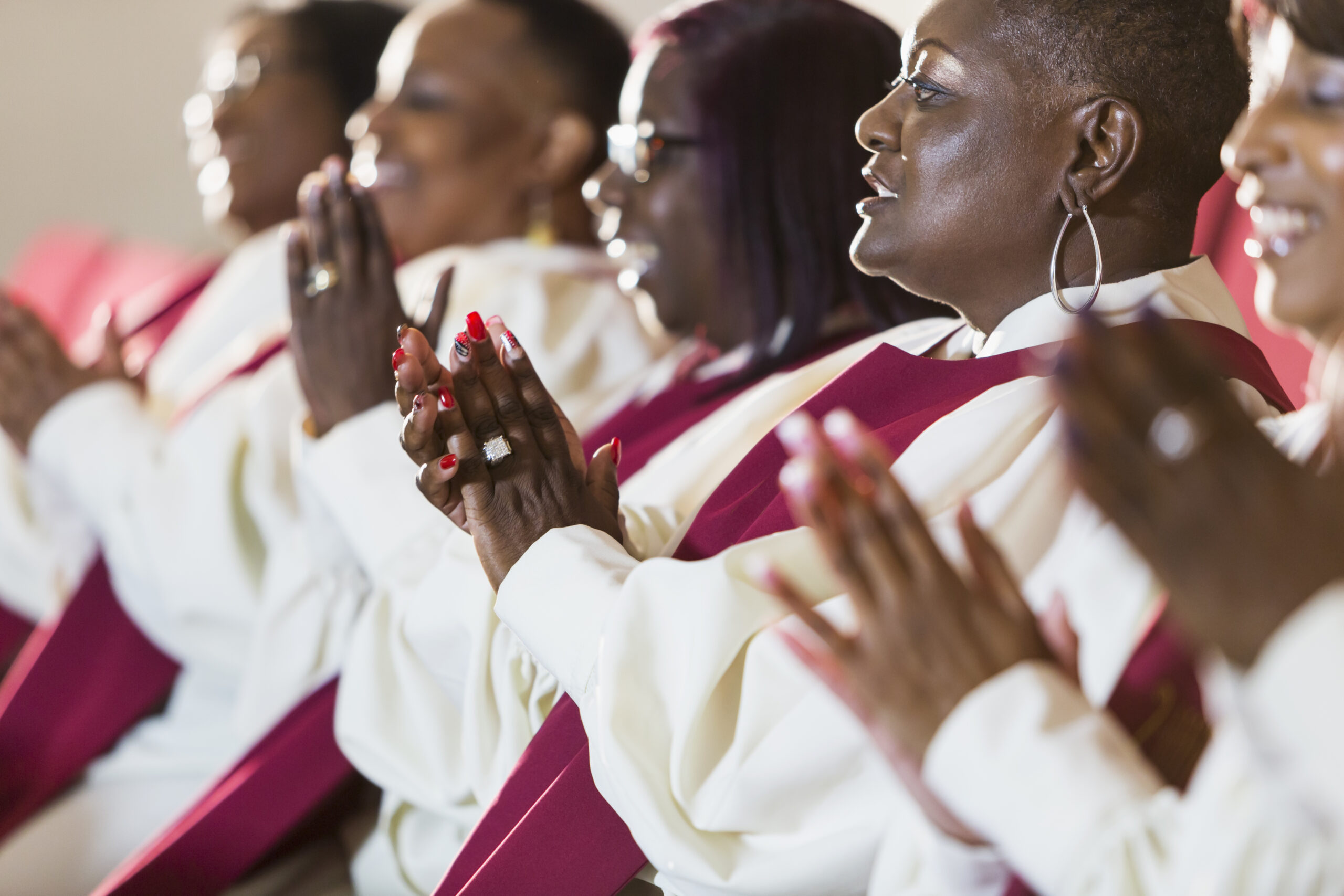When The Saints Come Marching In Lyrics: Since its beginning, “When the Saints Go Marching In” has been a classic and well-known gospel song that has been played in many musical styles and by people from different cultures. The song has become an important and well-known part of American music history. Its roots can be found in African-American spiritual practices. Even though no one knows where “When the Saints Go Marching In” came from, it became popular in the early 1900s and is now a standard in jazz, blues, church, and even pop music.
Its catchy melody and uplifting lyrics have made it a favorite of many bands and artists from different styles, which only adds to its lasting appeal. The bright and happy mood of the piece is shown by its fast pace and happy message. The lyrics, which paint a picture of celebration and joy as saints join together to march to glory, are used by many singers in different ways.

“When the Saints Go Marching In” is more than just a good song. It has deep cultural and spiritual meaning. African-American religious roots show in the song. It shows the faith, hope, and persistence of a people who found comfort and strength in their spiritual pursuits. Many artists have recorded and sung this hymn over the years, each adding their style to the timeless piece to make sure it stays relevant and powerful.
When the Saints Go Marching In lyrics What does it mean?
Analysis of the traditional lyrics
As the hymn expresses the wish to go to Heaven, picturing the saints going in (through the Pearly Gates), it is sometimes played at funerals.
“When the Saints Go Marching In” is a religious song that is based on the spiritual practices of African Americans. There is a song that talks about how the saints’ entry into Heaven is a happy and triumphant event. In this case, the devoted Christians and followers are called saints. The song is about the hope of a happy future and the best reward for being loyal and good in life.
The song’s words are full of hope, optimism, and spiritual joy. They represent African American religious experience and the unwavering belief in a better life beyond physical suffering. The song is a celebration, and its bright and happy melody makes it a mainstay in many types of music, such as jazz and choir.
Over the years, “When the Saints Go Marching In” has been translated and changed by many artists, each with their own style and flair. The song’s main idea is still based on Christian doctrine, but it has a message of hope, persistence, and the desire for a heavenly and happy future that makes it popular all over the world. It stays important to culture even though it has religious roots and is now a valuable and well-known piece of music history.
What is the historical origin of “When the Saints Go Marching In,” and how has it evolved over time?
The story behind “When the Saints Go Marching In” comes from African-American spiritual traditions that were passed down orally in the late 1800s and early 1900s. It’s not clear where it came from exactly, but most people think it’s a classic gospel song that comes from the rich musical traditions of African-American churches.
The song went through a huge change as it moved from its spiritual roots to different types of music. The first recorded versions of the song, which came out in the 1920s, showed how the tune changed into jazz and blues. Jazz musicians like Louis Armstrong helped make the song famous by adding the lively and improvised parts that are typical of the jazz style.
Over the years, “When the Saints Go Marching In” has changed to include different types of music and cultural topics. It went beyond its religious roots to become a worldwide phenomenon that people in many countries enjoy and that artists of all styles have changed. The song’s catchy tune and lively mood made it a classic and adaptable piece of music that was loved for its religious meanings as well as its ability to make people happy. It now shows that the song is still great, that it can connect with people from different cultures, and that it is a timeless musical classic.
Why do soccer fans sing When the Saints Go Marching In?
The old hymn and jazz tune “When the Saints Go Marching In” is used by a number of teams in various sports. It may be used as the team’s theme song or reserved for when they scored. Liverpool fans used it as a football chant to honour their player Ian St John in the 1960s, a song that was also adopted by other clubs.
For many different reasons, soccer fans often chant “When the Saints Go Marching In” as an emotional and unified song during games. The song is a great way for fans to show their love and support for their club because it has a catchy tune and a fast beat. The tune was first written as a gospel song, but it has grown beyond its religious roots to become a popular and useful melody.
The words have a special meaning when you’re a soccer fan, even though they come from Christian ideas about the hope that saints have of going to Heaven. Because they were adopted, the song became a chant that brought the fans together and encouraged them. Fans can join in and feel like they’re part of a group because the song is repeated and easy to sing.
The happy and triumphant mood of “When the Saints Go Marching In” also goes well with the excitement and fun of sports culture. Fans from many teams and countries have made the song their national anthem because it can be used in many situations. This has made it a worldwide fan favorite. Lastly, shouting this famous song during soccer games makes fans feel more proud of their group identity and shared passion, which makes the stadiums more memorable and exciting places to be.
What is the history of When the Saints Go Marching In?
“When the Saints Go Marching In,” often called “The Saints,” is a traditional American hymn that New Orleanians have adopted as their unofficial anthem. Originally published as a spiritual, the hymn was a favorite instrumental in traditional jazz funerals during the early 1900s.
The spiritual roots of African Americans are what give “When the Saints Go Marching In” its long and varied past. It’s not clear where it came from exactly, but African-American church songs from the late 1800s and early 1900s are thought to be their ancestors. The song became well-known and was passed down from generation to generation.
When it was first heard on record in the 1920s, the song was set to a traditional church tune. “When the Saints Go Marching In” became a standard in many types of music over time because it worked well with the spontaneous and changing styles of jazz and blues. Its happy, catchy tune is liked by artists who want to get people interested and entertained.
Coming from a religious background, the song continued to change as it became popular in everyday life. In the 20th century, it turned into a symbol of celebration, usually linked to parties and happy events. Because it mixes different types of music and features the famous jazz performance by Louis Armstrong, “When the Saints Go Marching In” has become a worldwide hit that many people enjoy. Its lasting popularity is due to its adaptability and ability to resonate across cultural and musical landscapes. This makes it a timeless and widely-known piece of musical history.

How does the song reflect the cultural and religious experiences, particularly within the African-American spiritual tradition?
“When the Saints Go Marching In” is a spiritual that combines religious and cultural themes from the African-American spiritual tradition. It has deep roots in the rich patchwork of spirituals. These spirituals, which began during the time of slavery, were strong statements of faith, strength, and a desire to be free. The happy, victorious tone of the song shows the hope and faith that were important to African Americans’ religious experience.
Many people who read the song’s words are deeply religious and dedicated, and they believe that good people will have a wonderful life after death. From this point of view, the march is a joyful trip into the heavenly realms, and the saints are devoted Christians. This picture fits with the African-American custom of using music to express oneself, worship as a group, and find comfort during hard times.
African-American spirituals often use a call-and-response style that brings people together and makes them feel like they have a common experience. As in places of prayer for everyone, it shows how united and strong the group is. “When the Saints Go Marching In” is an important piece of African-American culture and religion because it shows their spiritual goals and unwavering hope. It’s a musical tribute to bravery, faith, and the fight for freedom.
What is The Saints theme song?
YING YANG TWINS “HALFTIME” (NEW ORLEANS SAINTS THEME SONG!) | Entertainment/Life | nola.com. You have permission to edit this youtube. YING YANG TWINS “HALFTIME” (NEW ORLEANS SAINTS THEME SONG!)
“When the Saints Go Marching In,” a famous song with roots in African-American spiritual practices, is often linked to “The Saints.” The New Orleans Saints are a professional football team in the National Football League (NFL). The song became a rallying cry for the team and is now an important part of the Saints’ character.
Because of the city’s historical and cultural importance, the link between the New Orleans Saints and “When the Saints Go Marching In” is particularly interesting. New Orleans loves jazz music in particular, and this song fits right in with the city’s lively and happy vibe. The song has become an unofficial theme for the team, and the passionate and lively fans have made the games a unique and happy place to be.
At Saints games, playing or singing “When the Saints Go Marching In” has become a beloved tradition, both inside the stadium and among the fans. It shows how strong and diverse New Orleans is, as well as the journey and goals of the team. The happy, upbeat tone of the song brings fans together by making them feel proud and united as they cheer for their favorite team.
When the saints come marching in lyrics
Many years ago, the famous song “When the Saints Go Marching In” was written. Its roots can be found in African-American spirituality. The song’s lyrics can be different, but they usually talk about how excited and hopeful people are about the idea of saints joining the beauty of paradise. The beginning of the song has a lulling tone that makes you want to picture a time when the saints will march triumphantly into heavenly kingdoms.
The positive and happy mood is set by the first few lines, which talk about wanting to march with saints and the good. People often shout, “Oh, when the saints go marching in!” This is a happy statement about the event that stresses how everyone is a part of this celestial parade.
Some of the most common themes in the lyrics are salvation, redemption, and the final reward for living a moral life. Being one of those who march in with the saints means that you want to be counted among those who deserve heavenly grace. It’s a spiritual goal.
Throughout the song, joy and respect live side by side, showing how religious experience is often contradictory. Even though the lyrics talk about the problems and struggles of this life, the chorus, which talks about a beautiful and peaceful afterlife, is a source of hope.
To feel faith, hope, and the excitement of a glorious reunion, “When the Saints Go Marching In” is the right song. This song has been an important part of religion and musical history for a long time because it can connect with people from all walks of life and give them a spiritual boost.
When The Saints Go Marching In
“When the Saints Go Marching In” is a gospel song that represents happiness and spiritual celebration. It comes from the spiritual tradition of African Americans. This famous song has its roots in the long history of church hymns, but it has become an anthem for everyone, regardless of religion or culture.
The words to the song make me think of a beautiful procession of happy saints marching toward the gates of Heaven. Its call-and-response style encourages a sense of community and group happiness by reflecting the social aspect of African-American religious life. The song’s repeated refrain, “When the saints go marching in,” is like a loud chant that makes everyone want to join in and makes everyone happy.
Although the hymn has its roots in church music, it has been changed over the years to fit jazz, blues, and popular music styles. Many different groups around the world use it as a sign of joy and hope because it can be used in many different ways.
The song “When the Saints Go Marching In” has been played at sports events, parades, and church services. It’s an eternal statement of faith, hope, and a shared wish for a good life after death. It is a cultural treasure that has been passed down from generation to generation because of its catchy rhythm and positive message. It shows how joy and faith can last forever.
“When the Saints Go Marching In” is a famous example of how music can capture the hopes, dreams, and faith of people. The hymn comes from an African-American spiritual tradition, but it has become a global song of happiness, strength, and hope that cuts across all religions. The lyrics to the song tell a story about spiritual awakening, forgiveness, and the desire for a quiet afterlife. They are happy and upbeat.

From its roots as a gospel hymn to its use in jazz, blues, and other types of music, the hymn shows how flexible it is. A musical sensation, its catchy tune and uplifting message have made it popular with musicians and groups all over the world.
The call-and-response structure of “When the Saints Go Marching In” shows a sense of community, as does the song’s ability to bring people together in joyful celebration. The hymn brings peace and hope to everyone, whether it’s sung at a church service, a cultural event, or as the theme song for a sports championship.
Lastly, “When the Saints Go Marching In” will always be loved by everyone, regardless of age or culture. People still think of it as a valuable and important piece of musical history that inspires them to join the march to a brighter and more peaceful future. The song is an important part of a culture that everyone can relate to because it has a message of joy and hope that lasts.







Leave a comment